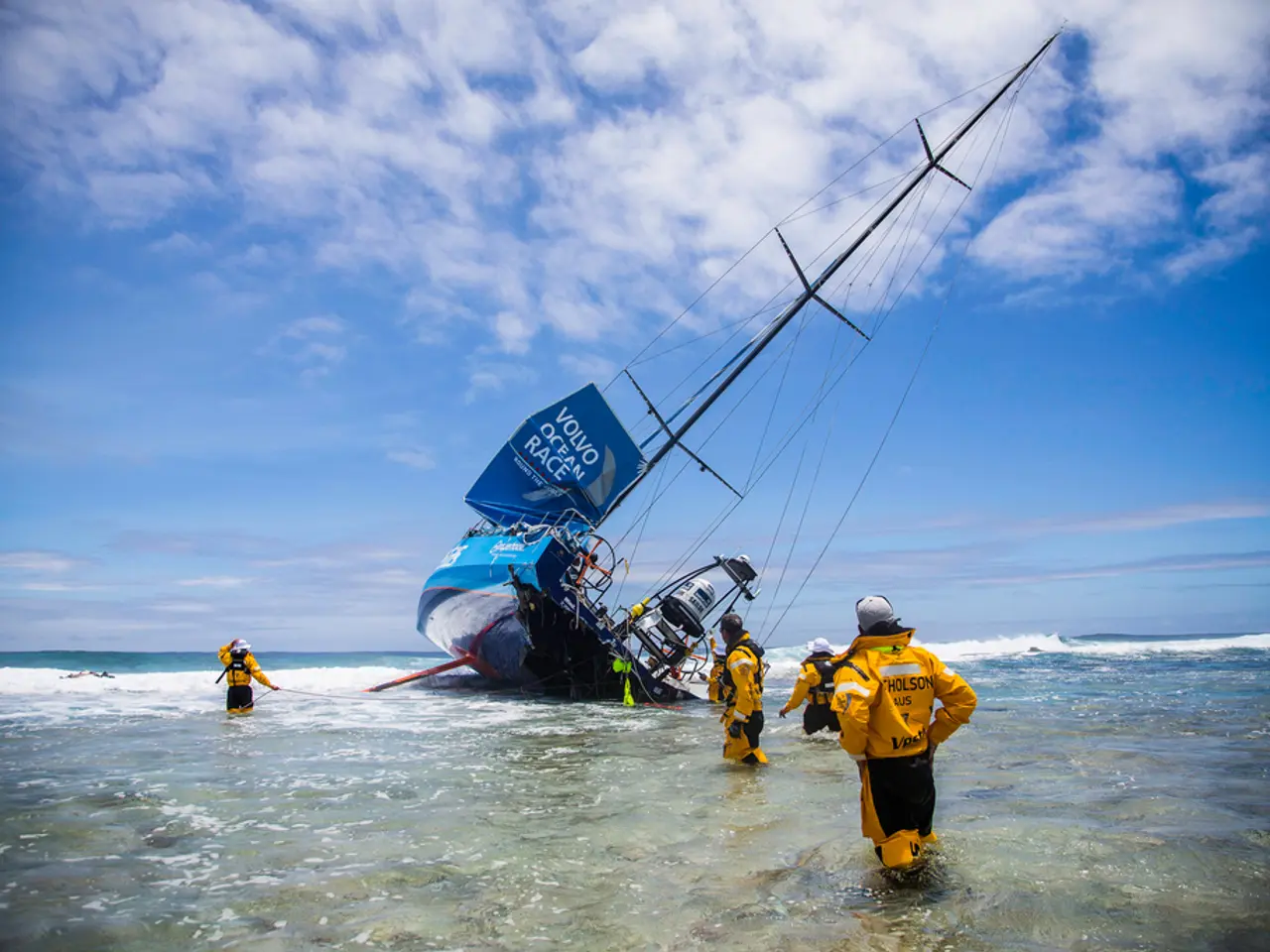Intense June heatwave sets new records, prompting attempts by legislators to categorize extreme heat events as disasters.
In the sweltering heat waves that have been gripping the United States, a pressing issue has come to light: the lack of federal disaster aid for extreme heat events. As of July 2025, the Stafford Act, the guiding law for disaster declarations, does not consider extreme heat a disaster eligible for federal funding [1][3].
This means that states and localities facing extreme heat emergencies cannot access Stafford Act disaster funds for direct relief or preparation, unless heat occurs as part of an already qualified disaster (e.g., a hurricane). A bipartisan group of lawmakers, including Senator Jacky Rosen (D-NV), Senator Ruben Gallego (D-AZ), and Representative Sylvia Garcia (D-TX), have reintroduced the Extreme Heat Emergency Act to address this gap [1][2]. If passed, this would enable affected communities to receive federal disaster assistance comparable to what is provided for other weather-related disasters [1][2].
However, as of now, no such bill has been enacted, and previous legislative efforts have so far failed to change the classification [1]. The U.S. Chamber of Commerce and some business groups have criticized the proposed federal rule to protect workers from heat, arguing it would impose unreasonable burdens [4].
In June 2025, an extreme heat wave affected nearly half of the country, with temperatures exceeding 110 degrees in some places [5]. This heat wave resulted in 472 people in Maryland needing medical assistance for heat-related illnesses [6]. In 2022, more than 500 people died in one county in Nevada from heat-related illnesses, according to Senator Jacky Rosen [7].
The Occupational Safety and Health Administration is debating whether to institute the first federal rule to protect indoor and outdoor workers from heat [8]. Seven states - Washington, Oregon, California, Nevada, Colorado, Minnesota, and Maryland - have adopted independent heat protection rules for workers [9]. Deanne Criswell, the former FEMA administrator under President Biden, states that governors can already request a disaster declaration for extreme heat under the Stafford Act [10].
Criswell believes there needs to be a greater emphasis on supporting hazard mitigation projects and funding, which have been subject to cuts under the Trump administration [11]. If passed, the proposed legislation would enable states and local governments to request federal funds for cooling centers, air conditioning, water infrastructure projects, and heat adaptation projects [12].
Significant federal legislation to address extreme heat, both in the workplace and for disaster declarations, remains an uphill battle for Democrats [13]. As temperatures continue to rise, the need for action becomes increasingly urgent.
| Disaster Type | Currently Stafford Act Eligible | Notes | |------------------------------|:------------------------------:|---------------------------------------| | Hurricanes, tornadoes, etc. | Yes | Eligible for FEMA aid | | Extreme heat | No | Not eligible unless tied to another | | | | qualifying disaster |
References: [1] https://www.nytimes.com/2022/06/24/climate/heat-waves-extreme-weather-climate-change.html [2] https://www.congress.gov/bill/117th-congress/senate-bill/2054 [3] https://www.fema.gov/disasters/stafford-act [4] https://www.uscc.org/issues/workplace-safety-and-health [5] https://www.npr.org/2022/06/24/1103849300/heat-wave-broke-records-across-the-us-as-climate-change-makes-extreme-heat-more-frequent [6] https://www.baltimoresun.com/maryland/bs-md-heat-emergency-20220701-7j3756t77zf77jg5qj756jq6kq-story.html [7] https://www.nytimes.com/2022/07/08/us/politics/heat-wave-deaths-nevada.html [8] https://www.osha.gov/heat-illness/heat-related-disorders [9] https://www.npr.org/2022/06/24/1103849300/heat-wave-broke-records-across-the-us-as-climate-change-makes-extreme-heat-more-frequent [10] https://www.cnn.com/2022/07/15/politics/biden-administration-extreme-heat-declarations/index.html [11] https://www.politico.com/news/2022/07/08/fema-disaster-declaration-heatwaves-510658 [12] https://www.congress.gov/bill/117th-congress/senate-bill/2054 [13] https://www.politico.com/news/2022/07/08/fema-disaster-declaration-heatwaves-510658
- The ongoing heat waves in the United States have highlighted a pressing issue: the Stafford Act does not consider extreme heat a disaster eligible for federal funding.
- If passed, the proposed Extreme Heat Emergency Act would enable communities facing extreme heat emergencies to receive federal disaster assistance similar to that provided for other weather-related disasters.
- Currently, the Stafford Act only provides federal aid for disasters such as hurricanes, tornadoes, and other weather emergencies, excluding extreme heat events.
- The Occupational Safety and Health Administration is contemplating the first federal rule to protect indoor and outdoor workers from heat, but criticism from business groups raises concerns about unreasonable burdens.
- Seven states have already adopted independent heat protection rules for workers, and governors can request a disaster declaration for extreme heat under the Stafford Act, but no such declaration has been granted yet.
- With temperatures continuing to rise and the increasing frequency of heatwaves, the urgency for federal legislation addressing extreme heat, both in workplaces and disaster relief, is becoming more critical.







